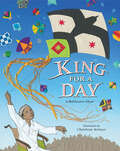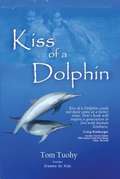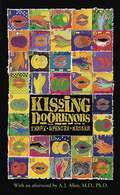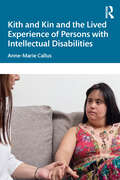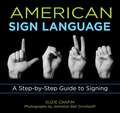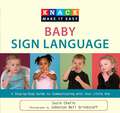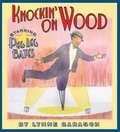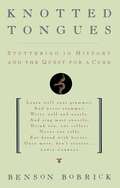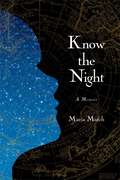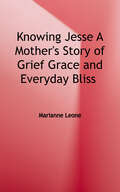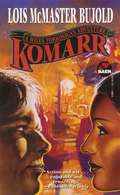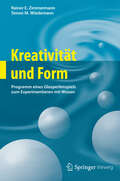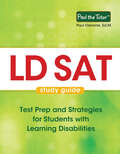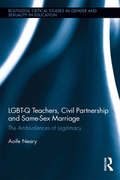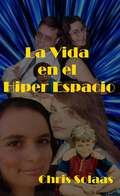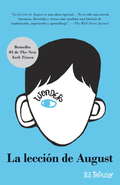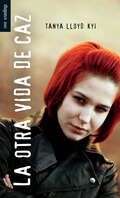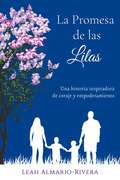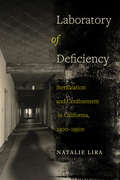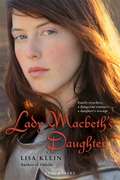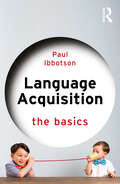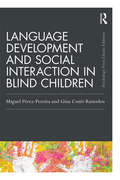- Table View
- List View
King for a Day
by Rukhsana KhanMalik, a Pakistani boy who uses a wheelchair, is excited to compete in the annual kite-flying festival of Basant. Can his kite defeat the bully's and make him "King" of the festival?Basant is here, with feasts and parties to celebrate the arrival of spring. But what Malik is looking forward to most is doing battle from his rooftop with Falcon, the special kite he has built for speed. Today is Malik's chance to be the best kite fighter, the king of Basant. In two fierce battles, Malik takes down the kites flown by the bully next door. Then Malik moves on, guiding Falcon into leaps, swirls, and dives, slashing strings and plucking kites from the sky. By the end of the day, Malik has a big pile of captured kites. He is the king! But then the bully reappears, trying to take a kite from a girl in the alley below. With a sudden act of kingly generosity, Malik finds the perfect way to help the girl. This lively, contemporary story introduces readers to a centuries-old festival and the traditional sport of kite fighting, and to a spirited, determined young boy who masters the sport while finding his own way to face and overcome life's challenges.
Kiss of a Dolphin
by Tom TuohyThis quote by John Kemp is taken from the first page of Kiss of a Dolphin and sums up the essence of the book: ... "Tom Tuohy's book does what I have been working to accomplish my entire life. Not only is it a pleasure to read, but reminds us all that kids can face so many disabling conditions on their way to growing up -- that poverty is no less immobilizing than conditions brought about by illness or accident. In a single work, it embodies so many of the ideals that the civil rights and advocacy movements of all types have been striving for throughout the past fifty years. It is a story about courage and fear. Many people fear those with disabilities: perhaps it is self-consciousness and a desire to not say or do the wrong thing. Not only do the people at Dreams for Kids appear to have no worries about doing the wrong thing, they seem to have adopted the "can do" attitude so necessary to positive change. And, they give everyone a place to start: the book encourages readers to look at the person in the wheelchair or with a cane, to get past any fear or self-consciousness, and start by saying "Hi." I love this book. I love it because Tom and his friends understand, at the deepest possible level, that everyone is disabled, at some time, in some way. It is clear the barriers Dreams for Kids remove have less to do with adaptive equipment than with the opportunity they give people to see themselves in a different way. And, it is equally clear that these opportunities are at least as valuable for the volunteers, as they are for the recipients."
Kissing Doorknobs
by Terry Spencer HesserFrom early on, Tara Sullivan had her worries. For years she was plagued by anxieties, but she managed to behave like an almost normal girl. Then, when she was eleven, Tara heard the phrase that changed her life: Step on a crack, break your mother's back. Before she knew it, Tara was counting the cracks everywhere she went. Over time, her "quirks" changed -- and multiplied, as she developed small rituals that made her feel better.
Kissing Doornobs
by Terry Spencer Hesser A. J. AllenDuring her preschool years, Tara Sullivan lived in terror that something bad would happen to her mother while they were apart. In grade school, she panicked during the practice fire drills. Practice for what?, Tara asked. For the upcoming disaster that was bound to happen?Then, at the age of 11, it happened. Tara heard the phrase that changed her life: Step on a crack, break your mother's back. Before Tara knew it, she was counting every crack in the sidewalk. Over time, Tara's "quirks" grew and developed: arranging her meals on plates, nonstop prayer rituals, until she developed a new ritual wherin she kissed her fingers and touched doorknobs....From the Paperback edition.
Kith and Kin and the Lived Experience of Persons with Intellectual Disabilities
by Anne-Marie CallusThis book considers the ways in which the lives of persons with intellectual disability are closely interconnected with those of the persons around them. The ways in which these interconnections work and the effects they have are examined by taking a very close look at specific instances in the lives of persons with intellectual disability, taken from published research and other sources and covering various life domains, including education, employment, creative work, socialising and family life. The fourteen case-study chapters (covering Australia, France, Ireland, Italy, Malta, Spain, the UK, and the USA) focus on the interactions between the person with intellectual disability concerned and other persons. The analyses use Paul Ricoeur’s concept of the interrelational self to show how the lives and selves of persons with intellectual disability are intimately intertwined with those of the persons who come into contact with them. Furthermore, it is argued that what we learn about the deep connections between persons with intellectual disability and those who play a significant role in their lives can be applied to general human experience. What happens in each one-to-one interaction is of paramount importance. The analyses are based on Max Van Manen’s phenomenonological research approach and critical phenomenology. The innovative approach thus created provides fresh insights and a different method for carrying out research and analysis in the area.The short format of the chapters in the main part of the book makes it suitable for use on a wide range of courses in disability studies as well as in other disciplines and areas of study, such as psychology, education, legal studies and childhood studies among others. It also makes it accessible for advocates and practitioners working with persons with intellectual disability.
Knack American Sign Language: A Step-by-Step Guide to Signing (Knack: Make It Easy)
by Suzie ChafinWhile learning a new language isn&’t a &“knack&” for everyone, Knack American Sign Language finally makes it easy. The clear layout, succinct information, and topic-specific sign language partnered with high-quality photos enable quick learning. By a &“bilingual&” author whose parents were both deaf, and photographed by a design professor at the leading deaf university, Gallaudet, it covers all the basic building blocks of communication. It does so with a view to each reader&’s reason for learning, whether teaching a toddler basic signs or communicating with a deaf coworker. Readers will come away with a usable knowledge base rather than a collection of signs with limited use. · 450 full-color photos· American Sign Language· Intended for people who can hear· Can be used with babies and young children
Knack Baby Sign Language: A Step-by-Step Guide to Communicating with Your Little One (Knack: Make It Easy)
by Suzie ChafinFew children can communicate effectively before eighteen months of age, but sign language can allow baby and parent to reduce the frustration up to a year earlier. With more than 450 full-color photos, text, and sidebars, Knack Baby Sign Language provides a user-friendly, efficient method to learn and teach a baby sign language. Organized by age, it provides signs appropriate to use with babies, with toddlers, and with older children for whom signing with games, songs, and rhymes is enriching. The signs can also be used with special needs children and those with delayed communication abilities.
Knockin' on Wood
by Lynne BaraschThis biography tells the story of Clayton "Peg Leg" Bates (1907-1998), an African American who overcame the hardship of losing a leg at the age of 12 in a factory accident and went on to become a world-renowned tap dancer.
Knotted Tongues: Stuttering in History and the Quest for a Cure
by Benson BobrickTwo and a half million Americans - fifty-five million people worldwide - stutter. Though their baffling malady has been subjected to endless analysis for over 2,500 years, most endure it without hope of a cure. The very anticipation of stuttering can dominate a victim's social and emotional life. If the majority suffer in anonymity, famous figures down through the ages - Moses, Charles I, Lewis Carroll, Henry James, W. Somerset Maugham, Winston Churchill, and Marilyn Monroe among them - have also known the isolation and trauma of living with knotted tongues. Indeed, Charles Dickens once aptly described stuttering as "a barrier by which the sufferer feels that the world without is separated from the world within.". In this fascinating and original social history, which combines literary scholarship with historical research, Benson Bobrick explores one of the great conundrums of medical history, its impact on the lives of the afflicted, and the astonishing therapeutic practices it has spawned. Demosthenes was obliged to labor up steep inclines with lead plates strapped to his chest and to declaim over the roar of the ocean with pebbles in his mouth; one 16th-century Italian physician prescribed nosedrops combining beetroot and coriander to help "dehumidify" the brain; and a Native American tribe had stutterers spit through a hole in a board "to get the devil out of their throats.". At one time or another, stuttering has been popularly traced to childhood trauma; sibling rivalry; suppressed anger; infantile sexual fixations; deformations of the tongue, lips, or jaw; chemical imbalance; strict upbringing; vicious habit; guilt; approach-avoidance conflicts; and so on, and has been treated by hypnosis, drugs, conditioning, electric shock, and of course, psychoanalysis. Mounting clinical evidence today, however, indicates that stuttering is a neurological problem, possibly involving anomalies of sound transmission through the skull. Genetic research suggests a familial link. While a definitive cure remains elusive, certain therapeutic techniques are effective, as the author explains in a compelling account of his own successful quest for deliverance
Know the Night
by Maria MutchAn unforgettable memoir on the experience of isolation and the miraculous power of human connection. As a baby, Gabriel's first words and affinity for sign language enthralled his adoring parents. When these words fell away, and his medical diagnoses multiplied, Maria Mutch committed herself entirely to her son's care. Then, for about two years, Gabe slept very little, drawing mother and son into a nocturnal existence of almost constant wakefulness. In breathtaking prose, Maria shares the intensely personal challenges and revelations brought about by this period. As Gabe's sleeping hours dwindled, care took place within an isolated, often frightening world, in which Maria's desire for connection and meaning expanded. She became fascinated with stories of Antarctic exploration, and found a companion in Admiral Richard E. Byrd, an explorer who lived by himself in the polar darkness for months in 1934 and later wrote about his struggle for survival in a book called Alone. Reimagining Byrd's story and interweaving it with her own, Maria illuminates a search for love, understanding and comfort against the terrors of the unknown that will resonate with anyone who has lain awake in the dark, or longed to protect a loved one. Know the Night is a powerful journey into the mysteries of nighttime and the human mind, and a testament to the extraordinary bond between mother and child.
Knowing Jesse A Mother's Story of Grief Grace and Everyday
by Marianne LeoneJesse Cooper was an honor-roll student who loved to windsurf and write poetry. He also had severe cerebral palsy and was quadriplegic, unable to speak, and wracked by seizures. He died suddenly at age seventeen. In fiercely honest, surprisingly funny, and sometimes heartbreaking prose, Jesse’s mother, Marianne Leone, chronicles her transformation by the remarkable life and untimely death of her child. An unforgettable memoir of joy, grief, and triumph, Knowing Jesse unlocks the secret of unconditional love and speaks to all families who strive to do right by their children.
Komarr (Miles Vorkosigan #11)
by Lois Mcmaster BujoldAccident or Treachery? Komarr could be a garden-with a thousand more years work or an uninhabitable wasteland, if the terraforming fails. Now the solar mirror vital to the terraforming of the conquered planet has been shattered by a ship hurtling off course. The Emperor of Barrayar sends his newest Imperial Auditor, Lord Miles Vorkosigan, to find out why. The choice is not a popular one on Komarr, where a betrayal a generation before drenched the name of Vorkosigan in blood. In the political and physical claustrophobia of the domed cities, are the Komarrans surrounding Miles loyal subjects, potential hostages, innocent victims, or rebels bidding for revenge? Lies within lies, treachery within treachery-Miles is caught in a race against time to stop a plot that could exile him from Barrayar forever. His burning hope lies in an unexpected ally.
Kreativität und Form
by Simon M. Wiedemann Rainer E. ZimmermannAusgehend von der Idee des Glasperlenspiels, die Hermann Hesse in seinem gleichnamigen Roman entwirft, haben die Autoren in diesem Band die Möglichkeiten und Grenzen eines solchen Spiels im Umgang mit Wissen ausgelotet. Sie zeigen neue Methoden für das Wissensmanagement auf und verbinden dafür Erkenntnisse verschiedener Wissenschaftsgebiete wie Logik, System- und Erkenntnistheorie sowie Semiotik, Kognition und Kommunikation. Das begleitende Computerprogramm unterstützt Leser beim Experimentieren mit Wissen.
LD SAT Study Guide: Test Prep and Strategies for Students with Learning Disabilities
by Paul OsborneThe first SAT guide for students with learning disabilities. For the growing number of students with learning disabilities who take the SAT each year, studying for the test is even more grueling than it is for traditional students. There is nothing on the market to prepare them for the SAT, and traditional manuals are inadequate both in content and presentation. LD SAT Study Guide is the first commercially available SAT preparation manual that prepares students with disabilities in general, and devotes specific attention and instruction to the more common disabilities, including dyslexia, ADD/ADHD, nonverbal learning disabilities, math disabilities, and visual or auditory processing disorders. As a free supplement to the book, readers will have access to a companion website that enables them to take several practice tests and receive subject-specific feedback that pinpoints their strengths and weaknesses. Students can then focus their preparation accordingly to maximize their overall SAT score.
LGBT-Q Teachers, Civil Partnership and Same-Sex Marriage: The Ambivalences of Legitimacy (Routledge Critical Studies in Gender and Sexuality in Education)
by Aoife NearyThe introduction of legislative structures for same-sex relationships provides a new lens for grappling with the politics of sexuality in schools and society. The emergence of civil partnership and same-sex marriage in Ireland brings to the fore international debates around public intimacy, religion in the public sphere, secularism and the politics of sexuality equality. Building on queer, feminist and affect theory in innovative ways, this book offers insight into the everyday negotiations of LGBT-Q teachers as they operate between and across the intersecting fields of education, religion and LGBT-Q politics. Neary illustrates the complexity of negotiating personal and professional identities for LGBT-Q teachers.
LOS MITOS MÁS ABSURDOS ACERCA DE LA SORDERA EN LA HISTORIA MUNDIAL
by Karla M. V. Roberto Carlos Pavón CarreónEsta investigación tuvo como objetivo recoger citas y datos históricos tratando la visión de la sociedad acerca de los sordos desde las primeras documentaciones de la humanidad sobre el tema. El análisis de los hechos requirió el acceso a diferentes fuentes de la investigación, que abarcando una gran variedad textual de libros y sitios científicos de diversos sitios. Uno de los objetivos de la investigación tenía era un trabajo con ejemplos de los mitos y las citas más absurdos ya documentados sobre la sordera humana, lo que demuestra la ignorancia o el poder creativo y cómo eso puede dificultar más a la vida de quienes padecen deficiencia auditiva. Los hallazgos señalan algunas consideraciones, y, lo más obvio de ellas, el poder de la ignorancia religiosa e interpretaciones así como de traducciones mal concebidas, así como el miedo de la gente a enfrentar algo que no entiende y, por lo tanto, terminan por no saber cómo actuar. Aún así, es preciso aclarar que no se tuvo intención alguna de ofender, humillar o faltar el respeto a los autores de los ejemplos y sus creencias religiosas. De todos modos, esta obra sólo tiene la intención de presentar mitos y sus consideraciones acerca de los sordos y tratar de acabar con tales historias a fin de aclarar y dar explicaciones en las correcciones, mostrando los datos técnicos obtenidos y analizados, para registrarlos en carácter permanente; pudiendo proporcionar una fuente de estudio capaz de estimular futuros trabajos de otro investigadores en el área.
La Vida en el Hiper Espacio
by Chris Solaas¿Pintar al gato con spray? ¿En qué estaba pensando? Con títulos universitarios de cuatro años en nuestro haber y un poco de capacitación en psicología infantil, mi esposa y yo pensamos que estábamos listos para cualquier cosa en lo que respecta a crianza. No teníamos idea de que nos superarían en número y en armamento. Desde dieta hasta motines antidisturbios, desde medicamentos hasta gráficos, lo hemos probado todo para entrenar a nuestros niños con TDAH en la forma en que deben crecer. Desde los conocimientos impartidos en la educación en casa, nuestros cuatro niños con TDH y TDAH nos han enseñado más sobre cómo sobrellevar y planificar con anticipación de lo que podría tener cualquier título universitario de cuatro años, especialmente cuando se trata de comprender lo que sucede en la mente de un niño de cinco años con un disfraz de Buzz Lightyear que vuela en una caminadora. Al infinito y más allá.
La lección de August
by R. J. PalacioSu cara lo hace distinto y él solo quiere ser uno más. Camina siempre mirando al suelo, la cabeza gacha y el . equillo tratando en vano de esconder su rostro, pero, aun así, es objeto de miradas furtivas, susurros ahogados y codazos de asombro. August sale poco, su vida transcurre entre las acogedoras paredes de su casa, entre la compañía de su familia, su perra Daisy y las increíbles historias de La guerra de las Galaxias.Este año todo va a cambiar, porque este año va a ir, por primera vez, a la escuela. Allí aprenderá la lección más importante de su vida, la que no se enseña en las aulas ni en los libros de texto: crecer en la adversidad, aceptarse tal y como es, sonreír a los días grises y saber que, al final, siempre encontrará una mano amiga.Desde que salió el 14 de febrero de 2012, La lección de August se ha situado en los puestos de las novelas más vendidos en la lista del New York Times y ha encontrado en la red la mejor manera de promocionarse. Como dice uno de sus lectores: «Léela. Compártela. Coméntala».
La otra vida de Caz: (My Time as Caz Hazard) (Spanish Soundings)
by Tanya Lloyd KyiCaz tuvo una muy buena razón para darle un puñetazo en la cara a su novio, pero aun así es expulsada. En su nueva escuela le dicen que es disléxica y que estará en el salón de educación especial. Caz trata de integrarse y de sobrellevar las burlas y el abuso con que otros jóvenes tratan a los estudiantes de su grupo. Mientras tanto, su amistad con Amanda la lleva a nuevos territorios: a faltar a la escuela y a robar. Como a todo eso se suma la inminente separación de sus padres, su vida simplemente se está saliendo de control. Caz thinks she has a pretty good reason when she punches her boyfriend in the face, but she gets expelled anyway. Moving to a new school, she is told she is dyslexic and sent to special education classes. Caz tries to fit in and get by while suffering the taunts and abuse that others throw at the students in her class. Her friendship with Amanda leads her into new territory—shoplifting and skipping school. Coupled with her parents' impending separation, her life is spiraling out of control.
La promesa de las Lilas: Una historia inspiradora de coraje y empoderamiento
by Leah Almario-RiveraEPILOGO De vez en cuando, mis amigos y familia me conectan con alguien que tiene un miembro de la familia diagnosticado con autismo, en caso de que pueda darles una mano u ofrecerles consejos. “¿Qué sugieres que haga? ¿Tienes algunas pautas?” Mi corazón se va con esa familia. ¿Cómo puedo ayudar cuando estoy a miles de kilómetros de ellos? En otros casos me han preguntado, “¿Por qué no trabajas directamente con niños con autismo ya que se beneficiarán de tu conocimiento?” Ojalá pudiera. Especialmente en América del Norte, las familias solo tratan con profesionales certificados en la materia. Mi conocimiento se limita a mi experiencia personal. En la reunión de atletismo del año pasado, un padre que conocía a Gordon desde el jardín de niños vino hacia mí. “¡Mira a tu hijo! Ha pasado por un largo camino.” Le sonreí, y mientras miraba a Gordon de reojo sonreí con mucho orgullo y asentí. Sí, estoy orgullosa de él. “Deberías escribir un libro.” Sugirió el padre. “¿Por qué?” Fruncí el ceño reaccionando a su sugerencia. “Gordon no es un prodigio ni ha desarrollado habilidades extraordinarias atribuidas popularmente a gente con autismo.” “Se han escrito muchas historias sobre éstas personas asombrosas. Pero el universo también está interesado en la historia de Gordon.” Agregó. Reflexioné ante la idea. Es cierto. Mi hijo tal vez no tenga habilidades increíbles, pero su historia puede servir de inspiración. Nunca había pensado en escribir nuestro viaje. Al pasar los años, la incidencia del autismo ha crecido. Cada vez que menciono ‘autismo’, el extraño con el que estoy hablando inmediatamente compartirá su historia sobre alguien que conoce que también está en el espectro (desorden del espectro autista) y se podría beneficiar de mis consejos e historia. Mientras tanto y afortunadamente, una gran dive
Laboratory of Deficiency: Sterilization and Confinement in California, 1900–1950s (Reproductive Justice: A New Vision for the 21st Century #6)
by Natalie LiraPacific Colony, a Southern California institution established to care for the "feebleminded," justified the incarceration, sterilization, and forced mutilation of some of the most vulnerable members of society from the 1920s through the 1950s. Institutional records document the convergence of ableism and racism in Pacific Colony. Analyzing a vast archive, Natalie Lira reveals how political concerns over Mexican immigration—particularly ideas about the low intelligence, deviant sexuality, and inherent criminality of the "Mexican race"—shaped decisions regarding the treatment and reproductive future of Mexican-origin patients. Laboratory of Deficiency documents the ways Mexican-origin people sought out creative resistance to institutional control and offers insight into how race, disability, and social deviance have been called upon to justify the confinement and reproductive constraint of certain individuals in the name of public health and progress.
Lady Macbeth's Daughter
by Lisa KleinRaised by three strange sisters, Albia has never known the secrets of her parentage. But when Macbeth seeks out the weird sisters to foretell his fate, his life is entangled with his unknown daughter's. When Albia foresees the terrible future, she becomes determined to save Macbeth's rival--and the man she loves--from her murderous father. Klein's seamlessly drawn tale makes it seem impossible that Albia was not part of Shakespeare's original play.
Land Use Law and Disability
by Robin Paul MalloyIn Land Use Law and Disability, Robin Paul Malloy argues that our communities need better planning to be safely and easily navigated by people with mobility impairment and to facilitate intergenerational aging in place. To achieve this, communities will need to think of mobility impairment and inclusive design as land use and planning issues, in addition to understanding them as matters of civil and constitutional rights. Although much has been written about the rights of people with disabilities, little has been said about the interplay between disability and land use regulation. This book undertakes to explain mobility impairment, as one type of disability, in terms of planning and zoning. The goal is to advance our understanding of disability in terms of planning and zoning to facilitate cooperative engagement between disability rights advocates and land use professionals. This in turn should lead to improved community planning for accessibility and aging in place.
Language Acquisition: The Basics (The Basics)
by Paul IbbotsonLanguage Acquisition: The Basics is an accessible introduction to the must-know issues in child language development. Covering key topics drawn from contemporary psychology, linguistics and neuroscience, readers are introduced to fundamental concepts, methods, controversies, and discoveries. It follows the remarkable journey children take; from becoming sensitive to language before birth, to the time they string their first words together; from when they use language playfully, to when they tell stories, hold conversations, and share complex ideas. Using examples from 73 different languages, Ibbotson sets this development in a diverse cross-cultural context, as well as describing the universal psychological foundations that allow language to happen. This book, which includes further reading suggestions in each chapter and a glossary of key terms, is the perfect easy-to-understand introductory text for students, teachers, clinicians or anyone with an interest in language development. Drawing together the latest research on typical, atypical and multilingual development, it is the concise beginner's guide to the field.
Language Development and Social Interaction in Blind Children (Psychology Press & Routledge Classic Editions)
by Gina Conti-Ramsden Miguel Perez-PereiraThe Classic Edition of this foundational text includes a new preface from Miguel Pérez-Pereira, examining how the field has developed since first publication. The volume provides an in-depth account of blind children's developing communicative abilities, with particular emphasis on social cognition and language acquisition from infancy to early school age. It provides insights into why the development of blind children may differ from that of sighted children and explores development of "theory of mind" and perspective taking in language learning. It also discusses the caregiver–child interaction, research on early intervention and practical strategies for blind children that can assist parents and practitioners. The up-to-date preface discusses recent neurological research and the comparison between the psychological development of visually impaired and autistic children. Language Development and Social Interaction in Blind Children continues to facilitate dialogue between those interested in the study of typically developing children and those interested in the development of children who are blind, and challenges some widely held beliefs about the development of communication in blind children.
